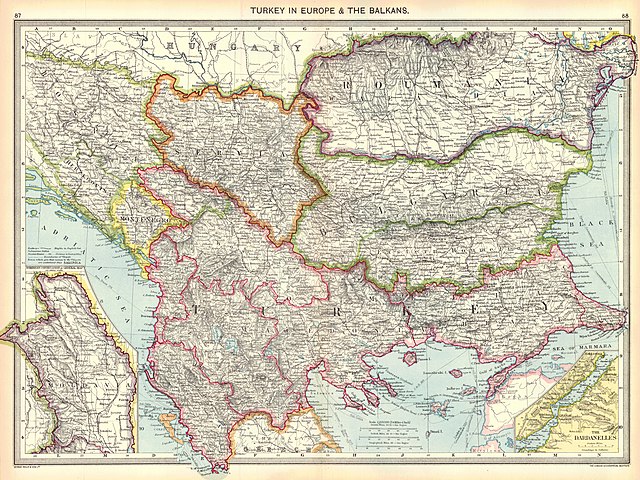A vilayet, also known by various other names, was a first-order administrative division of the later Ottoman Empire. It was introduced in the Vilayet Law of 21 January 1867, part of the Tanzimat reform movement initiated by the Ottoman Reform Edict of 1856. The Danube Vilayet had been specially formed in 1864 as an experiment under the leading reformer Midhat Pasha. The Vilayet Law expanded its use, but it was not until 1884 that it was applied to all of the empire's provinces. Writing for the Encyclopaedia Britannica in 1911, Vincent Henry Penalver Caillard claimed that the reform had intended to provide the provinces with greater amounts of local self-government but in fact had the effect of centralizing more power with the sultan and local Muslims at the expense of other communities.
Vilayets of Europe in 1870
Vilayets of Europe in 1893
Vilayets of Asia in 1909
Vilayets of Europe in 1910
The 1864 Vilayet Law, also known as the Provincial Reform Law, was introduced during the Tanzimat era of the late Ottoman Empire. This era of administration was marked by reform movements, with provincial movements led largely by Midhat Pasha, a key player in the Vilayet Law itself. The Vilayet Law reorganized the provinces within the empire, replacing the medieval eyalet system.
Midhat Pasha
Law of the vilayets in Ottoman Turkish, published in Düstur series 1, Volume 1, Page 608
Law of the vilayets (French: loi des vilayets; 1867) in French, in Volume II of Legislation ottomane, published by Gregory Aristarchis and edited by Demetrius Nicolaides
The Vilayet Law (Greek: Νόμος των Βιλαετίων) within the "Ottoman Codes" (Greek: Оθωμανικοί Κώδηκες "Othōmanikoi kōdēkes", with Demotic Greek using "Οθωμανικοί κώδικες"), the Greek version of the Düstur, edited by Demetrius Nicolaides








